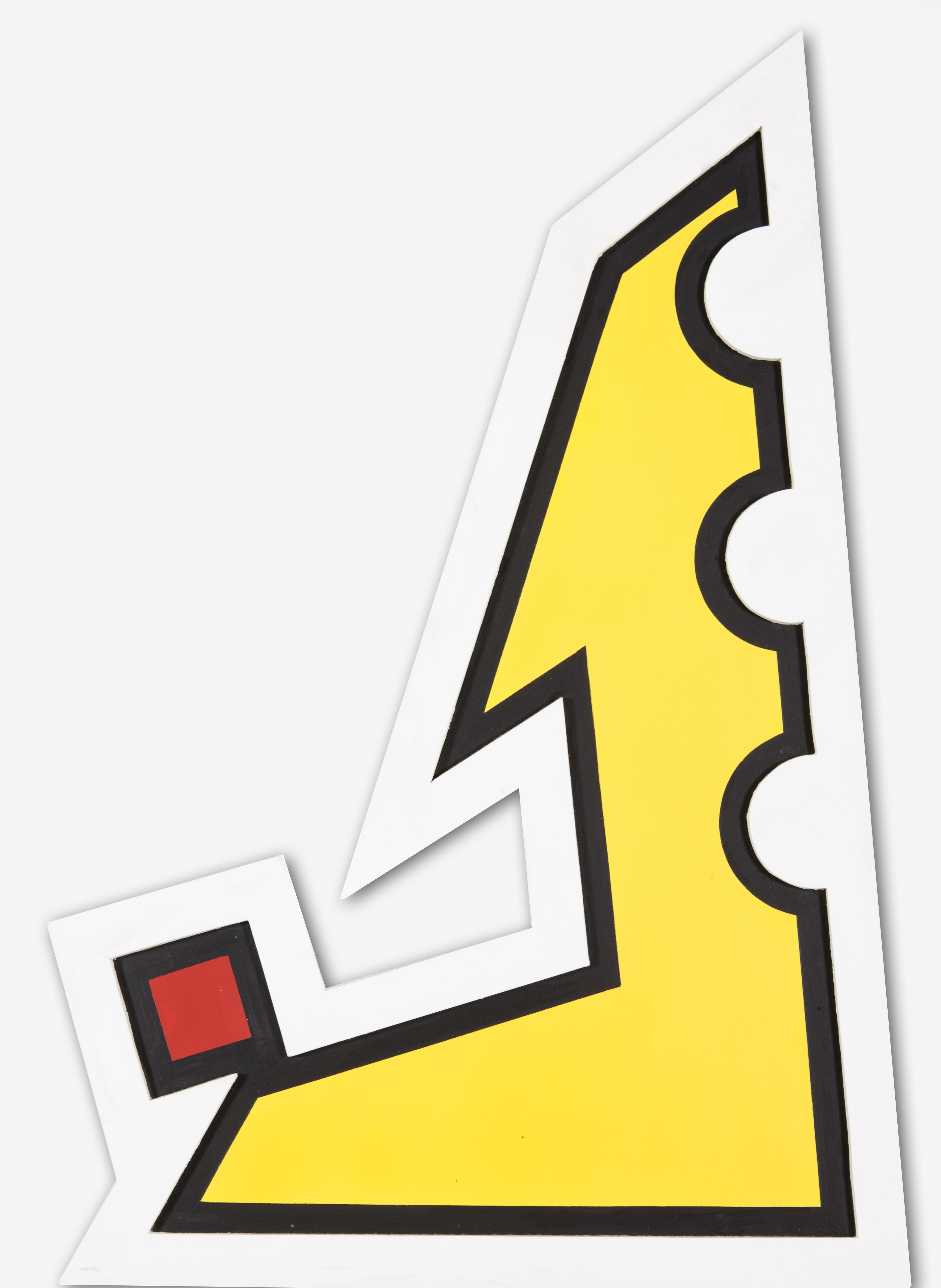Rhod Rothfuss received his education in Montevideo at the end of the 30s and the beginning of the 40s, first at the Crculo de Bellas Artes and later at the Academia de Bellas Artes. In the mid-40s he developed a style that, although compatible with Cubism, constituted one of the first South American examples of the use of the “irregular frame”. Rothfuss was the first theoretician of the “irregular frame”. In 1944 he joined the group that published the magazine Arturo which promoted abstract arts and included Carmelo Arden Quin, Gyula Kosice, Tomas Maldonado, Lidy Prati and Edgar Bailey. Violently combative in its eagerness for breaking up with the previous forms of figurative art and keeping up with the international vanguard, Arturo rose as the original landmark of abstract geometric and constructivist art from the Rio de la Plata area. In the only issue ever published, Rothfuss questioned, in his famous essay, the use of the “regular frame” in conventional painting, and proposed in its place the use of the “irregular frame,” which he considered indispensable in order to be auto-referential because it suppressed the “background” and it was structured according to the own composition. His proposal was adopted and practiced by several of his colleagues even after they followed different movements of abstract-geometric and constructive art on both sides of the Rio de la Plata.
In 1945 Rothfuss participated in the original exhibitions of the Asociacin Arte Concreto-Invencin(1945), and, in 1946, he created the Mad movement with Carmelo Arden Quin, Gyula Kosice and Martin Blaszko. This movement intended to resolve concrete art’s lack of universality which, according to them prevented the success attained by movements such as Surrealism. The goal of the Mad movement was to invent and create eternal objects with absolute value. Rothfuss participated in the first three exhibitions of Mad art that were presented in Buenos Aires in 1946 (Galera Van Riel, Escuela Libre de Arte Altamira and Bohemien Club). In 1947 the group was dissolved due to a dispute between Arden Quin and Kosice. Rothfuss chose to join Kosice in promoting the movement’s philosophy in Buenos Aires and Montevideo. Rothfuss continued to experiment with paintings irregularly framed and created abstract sculptures with movable parts. He participated in the most important collective exhibitions that promoted Mad art and Ro de La Plata abstraction, including, among others, Primera exposicin madista internacional (Ateneo de Montevideo, 1947), I salon des Ralits Nouvelles (Muse d’Art Moderne Ville Paris, Paris, 1948) and the two editions of Saln de Nuevas Realidades (Galera Van Riel, Buenos Aires, 1948 and 1949).
